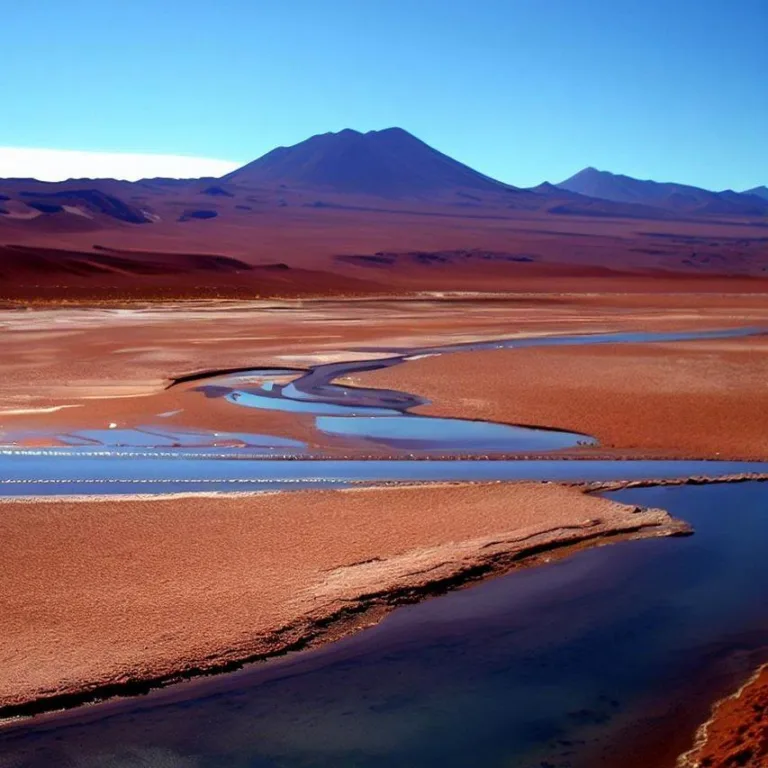Welcome to the mesmerizing world of Atacama, a place where stark beauty and harsh conditions come together to create an otherworldly landscape. Nestled in South America, the Atacama Desert is a unique destination that captivates adventurers, scientists, and nature enthusiasts alike. In this article, we delve into the secrets of Atacama’s remarkable geography, its extraordinary biodiversity, and the experiences it offers to intrepid travelers.
The mystique of atacama’s geography
The Atacama Desert stretches along the western edge of South America, covering parts of Chile and Peru. It is often hailed as the driest non-polar desert on Earth, with some areas having recorded no rainfall for centuries. This arid expanse is defined by vast salt flats, rugged canyons, and towering sand dunes that seem to stretch endlessly into the horizon.
One of the most iconic features of Atacama is the Valle de la Luna (Valley of the Moon), a lunar-like landscape carved by wind and water erosion. The salt-encrusted valleys and surreal rock formations create an almost extraterrestrial ambiance, drawing comparisons to the surface of the moon.
A biodiverse oasis
Contrary to its reputation as a lifeless wasteland, Atacama surprises with its unexpected pockets of biodiversity. The desert’s extreme conditions have led to the evolution of unique plant and animal species that have adapted to survive in this harsh environment. From the hardy llareta plants that resemble giant green sponges to the elusive culpeo foxes, Atacama is a living testament to nature’s resilience.
One of the most awe-inspiring phenomena is the flowering desert, which occurs irregularly but spectacularly after periods of heavy rainfall. During these rare events, the arid desert is transformed into a riot of colors as various desert flowers burst into bloom, attracting insects, birds, and other wildlife.
Unforgettable experiences
Atacama offers a range of unforgettable experiences for those willing to explore its hidden treasures. Stargazing enthusiasts flock to the desert for its unparalleled celestial displays. The high altitude, clear skies, and minimal light pollution make Atacama one of the best places on Earth for observing the night sky. The world-renowned Paranal Observatory is located here, boasting some of the most advanced telescopes in the world.
Adventurers can embark on thrilling activities such as sandboarding down the colossal dunes, exploring salt flats that seem to stretch forever, and trekking through the otherworldly landscapes. The El Tatio Geysers, a field of steaming geothermal vents, provide a surreal experience as columns of steam shoot into the frigid air at sunrise.
Faqs about atacama
What is the best time to visit Atacama?
The best time to visit Atacama is during the cooler months from March to November. This is when the weather is more comfortable for exploring the desert landscapes and engaging in outdoor activities.
Are there accommodations available in Atacama?
Yes, there are various accommodations available, ranging from luxurious desert lodges to budget-friendly hostels. It’s recommended to book in advance, especially during peak tourist seasons.
Is it safe to explore Atacama?
Yes, Atacama is generally considered safe for tourists. However, it’s important to follow local guidelines and respect the desert environment. It’s advisable to hire a guide for certain activities to ensure a safe and enjoyable experience.
Can I witness the flowering desert?
The flowering desert phenomenon is rare and unpredictable, but it’s a breathtaking sight if you’re lucky enough to experience it. It usually occurs after periods of heavy rainfall, so keep an eye on weather patterns if you’re hoping to catch this natural spectacle.
Immerse yourself in the extraordinary world of Atacama, where ancient landscapes meet modern curiosity. This desert paradise invites you to explore its mysteries, witness its wonders, and create memories that will last a lifetime.
Viz také:






